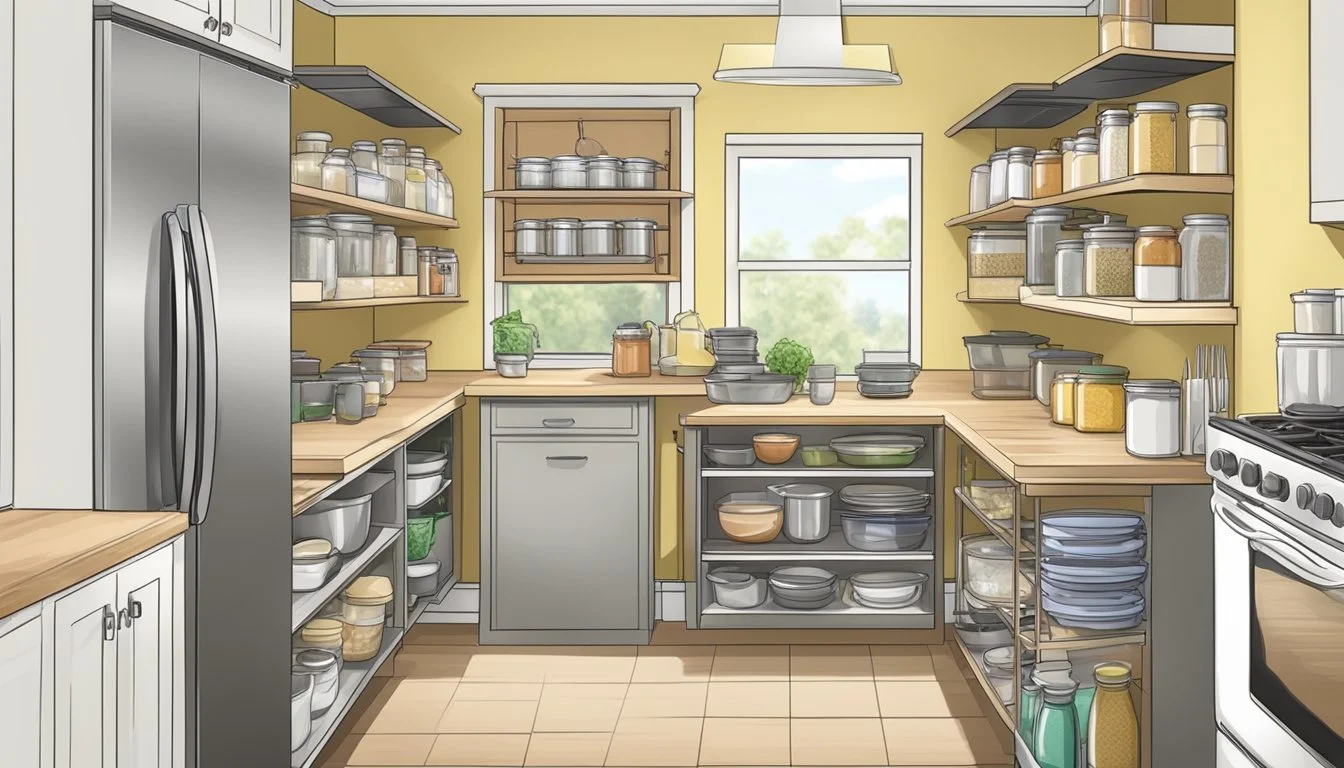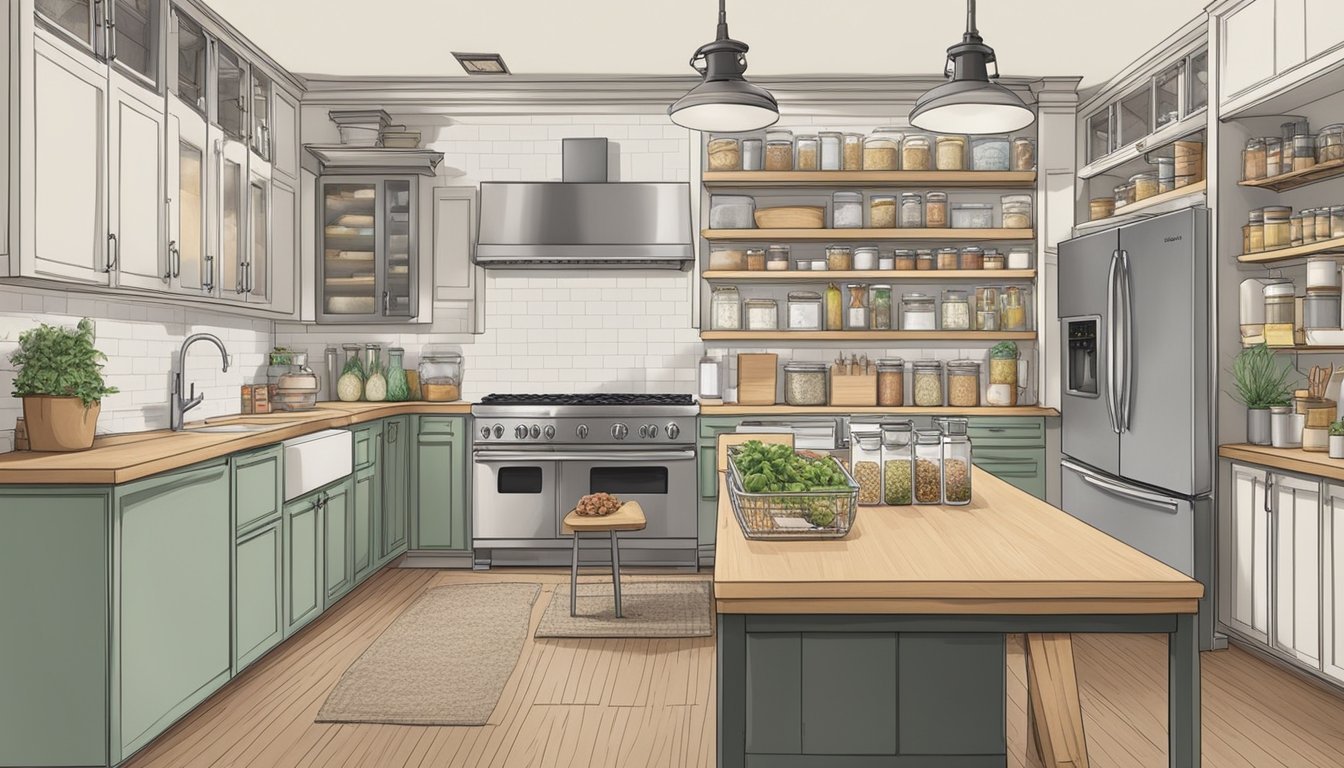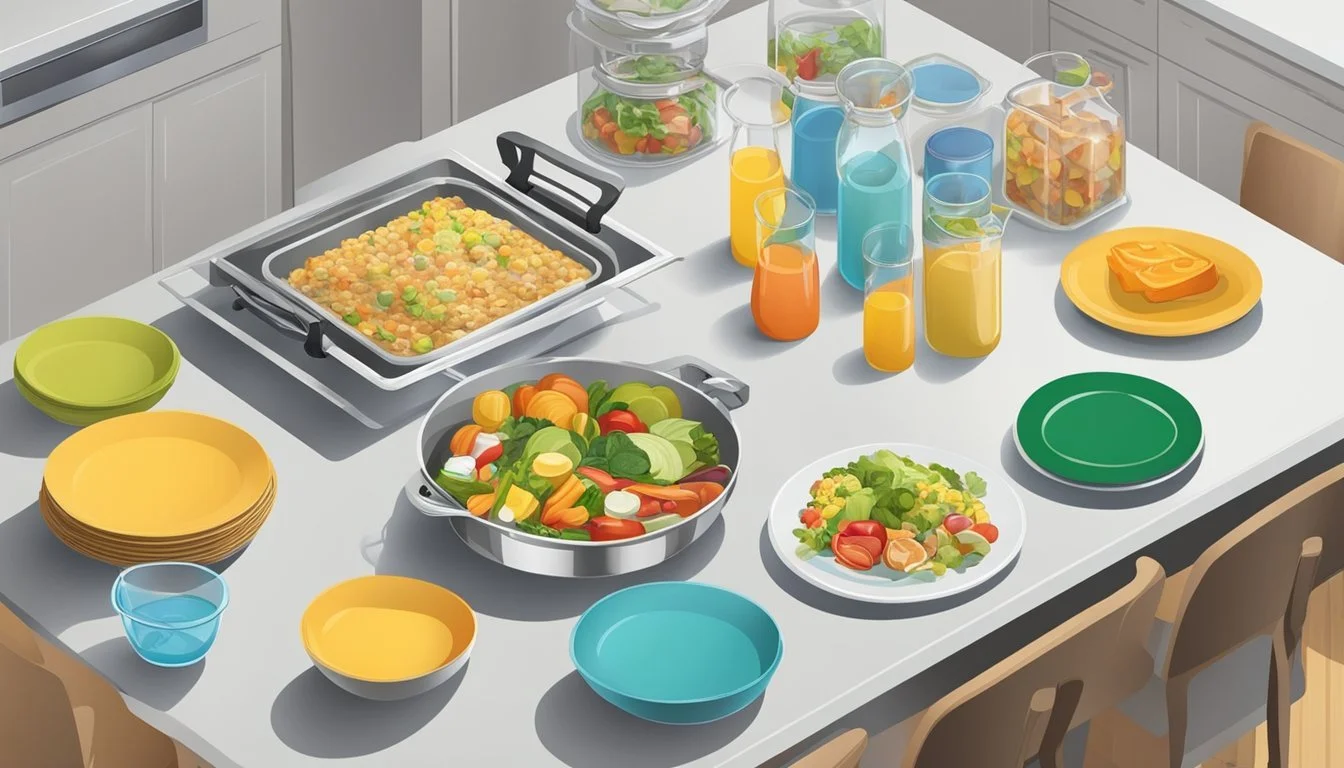5 Tips for Organizing Your Kitchen for a Dinner Party with a Potluck
Streamlined Strategies
Organizing a kitchen for a dinner (What wine goes well with dinner?) party that includes a potluck can be a game of strategy and efficiency. Potlucks, a tradition where guests contribute a dish to the meal, can alleviate some of the stress for the host while creating a diverse spread of foods to enjoy. To ensure the evening flows smoothly, it's important to plan how the kitchen will be arranged to accommodate the various dishes arriving with guests. The goal is to create a welcoming space where dishes can be heated, served, and displayed without overcrowding or confusion.
A clear layout and proper equipment are key to a successful potluck dinner party. Labeling areas for different types of dishes can guide guests in placing their contributions in the right location while making it easier for other guests to navigate the offerings. Furthermore, the host should ensure there are enough serving utensils and outlets for slow cookers and warming trays, which are often essential for keeping potluck dishes at the appropriate temperature.
To maintain the focus on socializing and enjoyment, it's crucial to manage the kitchen space effectively. This might include investing in stackable racks to create more surface area or designating a separate table for drinks to keep the kitchen less congested. With a well-organized kitchen, guests can easily present their dishes, and the host can take pleasure in the variety of flavors without the headache of last-minute organizing or clutter.
Planning Your Potluck
A successful potluck requires thoughtful organization, from setting a date and selecting a venue to coordinating with guests on what they'll bring. Mastery of potluck etiquette further ensures a harmonious event.
Setting the Date and Location
Choosing the right date is crucial for maximum attendance. Hosts should consider potential conflicts such as holidays or major events. Once the date is set, securing the location that accommodates the size of the guest list and the type of dishes being served is key. Private homes are popular options, but community centers or parks can work for larger gatherings.
Creating a Guest List
When compiling the guest list, it's essential to consider the space of the chosen venue and the variety of food expected. Invitations should be clear about the potluck nature of the party, and RSVPs can be managed through digital invitation platforms to track who brings what.
Deciding on a Theme
A theme can add a fun twist to a potluck and guide the guests in their choice of dishes. Themes can range from cultural cuisines to seasonal celebrations. It should be communicated clearly in the invitation to avoid confusion and culinary clashes.
Potluck Party Etiquette
Etiquette plays a significant role in a potluck's success. The host should provide a variety of dishes, including both cold and hot options to cater to different tastes. Guests should adhere to any requests or lists provided by the host, and consider dietary restrictions by labeling their dishes if necessary. The modern potluck has evolved to also include a collaborative spirit where guests contribute not just food, but aid in setting up or cleaning after the event.
Communication and Coordination
Successful potlucks rely on clear communication and thorough coordination to prevent duplicate dishes, accommodate dietary restrictions, and plan for leftovers. Precise communication ensures guests understand what to bring, while effective coordination helps the event run smoothly.
Potluck Sign-Up Methods
Organizers can create a digital sign-up sheet using platforms like Google Sheets or specialized potluck planning apps. These platforms allow guests to indicate what they're bringing and view others' contributions to avoid overlap. Providing a diverse category list — appetizers, entrees, desserts, and so on — helps guests make informed decisions.
Food Allergies and Dietary Restrictions
In the invitation phase, it's crucial to ask guests about any food allergies or dietary restrictions. This information should be compiled in a visible spot, such as the potluck sign-up sheet or a group message. Suggest labels for dishes indicating potential allergens or whether they are vegetarian, vegan, gluten-free, etc., to avoid any health risks.
Last-Minute Adjustments
Despite the best-laid plans, last-minute changes are inevitable. Organizers should encourage guests to communicate any adjustments to their dish as early as possible. A group chat or an email thread can be effective for these updates. This real-time coordination helps mitigate confusion and allows for timely adjustments to the menu to ensure a diverse and sufficient spread.
Preparing Your Home
When hosting a potluck dinner party, the host's home should facilitate seamless dining and interaction. Proper organization of tables and seating, strategic layout of serving areas, and thoughtful decorations set the stage for an enjoyable gathering.
Organizing Tables and Seating
The host should position tables and chairs to accommodate the number of guests without overcrowding the space. A dining table serves as the main seating area, while additional chairs can be redistributed as needed. It's imperative to ensure:
Tables: Arrange in a manner that facilitates easy movement and conversation.
Seating: Provide enough seats for all guests, using folding chairs if necessary.
Serving Areas and Food Layout
A clearly defined serving area aids in food organization and accessibility. The host should consider the following for an effective food layout:
Designated Sections: Label sections for appetizers, main courses, desserts, and beverages to guide guests.
Serving Utensils: Supply each dish with appropriate serving tools to avoid cross-contamination and ease of use.
Decorations and Ambience
The ambience of the party can be enhanced with decorations that resonate with the chosen theme. Keep in mind:
Lighting: Use soft, warm lighting to create a welcoming atmosphere.
Theme Consistency: Decor elements should complement the theme for a cohesive look.
Menu Planning and Food Preparation
Effective menu planning and precise food preparation are vital for a successful dinner party potluck. Coordinating dishes to ensure a well-balanced menu and the optimal seasoning of food will enhance the dining experience for all guests.
Balancing the Menu
A key aspect of organizing a potluck is ensuring a balanced selection of dishes. Hosts should communicate with their guests to coordinate a variety which should include:
Main dishes: A mix of meat, fish, and vegetarian options caters to different dietary preferences.
Side dishes: Include options like salads, bread, and a starch such as lemon rice to complement the mains.
Variety of dishes: Aim for a range of flavors and textures to keep the menu exciting.
Recipe Selection and Coordination
Selecting and coordinating recipes in advance helps to maintain harmony in the menu. Here are some guidelines:
Share potluck recipes: Encourage guests to share their recipes beforehand to avoid duplicates.
Ingredient overlap: For recipes that require the same ingredients, it can save time and reduce waste.
Cooking time and temperature: If the host is doing any last-minute cooking or reheating, they should ensure recipes have similar cooking times and temperatures to streamline preparation.
Preparing and Seasoning Food
Proper preparation and seasoning of dishes can significantly impact the quality of the meal. Recommendations include:
Preparation: If possible, undertake prep work such as chopping vegetables or marinating proteins a day before the event.
Seasoning: Advise guests to season dishes appropriately; it's easier to add more than to fix an over-seasoned dish. For instance, suggest seasoning meat and fish with at least salt and pepper for a basic flavor enhancement.
This section of the article has provided a focused approach to menu planning and food preparation for a dinner party potluck, ensuring that a well-balanced and harmonious selection of dishes is achieved through thoughtful coordination and meticulous preparation.
On the Day of the Potluck
The day of the potluck is crucial to ensure a seamless and enjoyable party. The host must focus on space management, clear labeling of areas for various dishes, and creating a welcoming environment for guests and their contributions.
Setting Up and Final Preparations
The host should confirm that the kitchen and dining spaces are clean and that there is enough room for the dishes the guests will bring. Countertops should be cleared, and designated areas for hot and cold dishes should be established. Labeling these areas can prevent confusion and ease the flow of food placement. Furthermore, it is essential to have ample serving utensils and extra containers for any leftovers.
Designated dish areas:
Hot dishes: Near outlets for crockpots and warmers
Cold dishes: Separate cooler or refrigerated space
Desserts: Displayed on a separate table or counter
Supplies check:
Ensure a stock of plates, cutlery, and napkins
Prepare a stack of labels and pens for dish identification
Have extra serving utensils at the ready
Receiving Guests and Dishes
As guests arrive, the host should greet each person, taking their dish and guiding them to the appropriate spot. Ensuring the food is placed in the correct area maintains the structure of the potluck. It is important for the host to stay organized here to keep the kitchen from becoming too chaotic and to prevent dishes from being misplaced. A check-in station for the potluck dishes can streamline this process.
Welcoming guests:
Greet each guest at the door
Assist them with their dishes
Dish placement:
Guide guests to the designated dish area
Help label the dishes, if not already done
Facilitating Conversations and Activities
Once guests have arrived and the potluck is underway, the host should focus on facilitating conversations among guests. Introducing guests who may not know each other can help spark dialogue and create a friendly atmosphere. The host can also encourage guests to share stories or facts about the dish they have brought. Additionally, having some planned activities can act as icebreakers and keep the party engaging.
Encourage mingling:
Introduce guests to one another
Share anecdotes or origins of each dish
Organize activities:
Plan simple games or activities
Create a space for people to gather away from the food tables
By following these steps, the host can help ensure that their potluck is a delightful gathering where both the meal and company are enjoyed by all.






